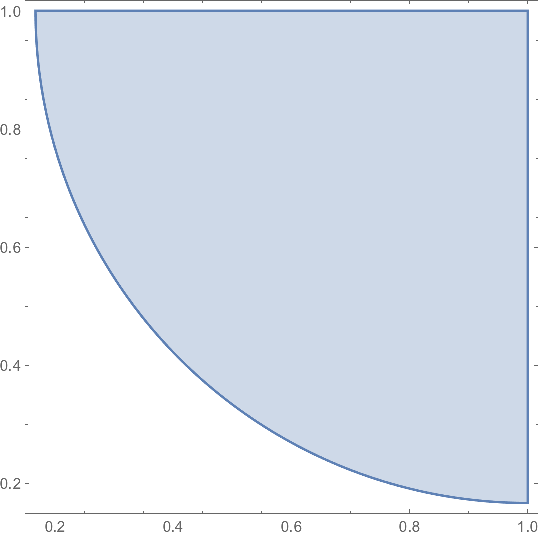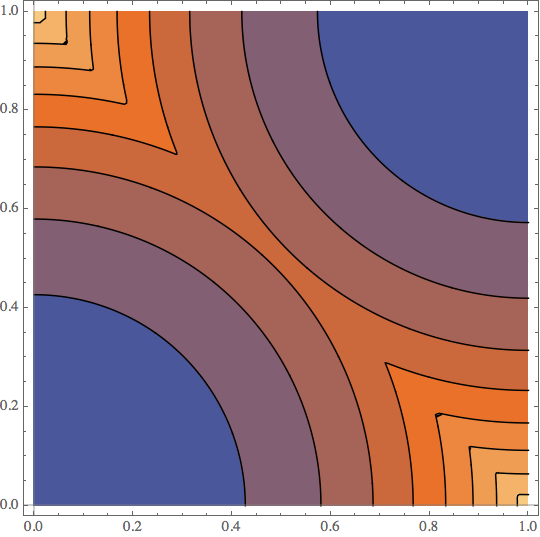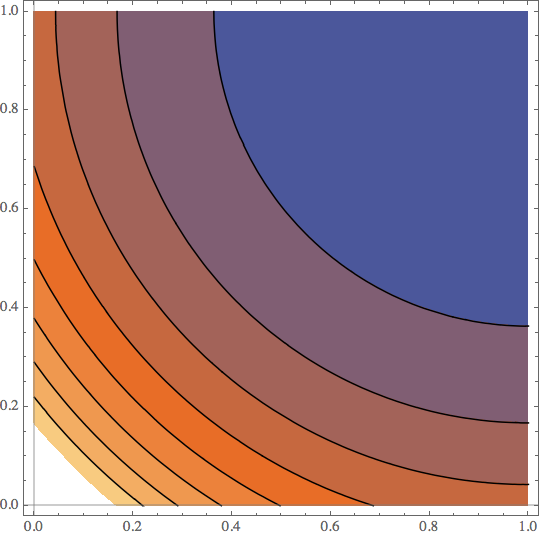I'm having trouble creating a region with ImplicitRegion. In general, I first limit the region to be within a Parallelogram.
basis = IdentityMatrix[2];
offset = {0, 0};
unitcell = Parallelogram[offset, basis];
I then define a toy function
toy1[x_, y_, n_] := Sort[{Exp[x^2 + y^2], Exp[(x - 1)^2 + (y - 1)^2]}][[n]];
Here's a plot of the first sheet of this toy function
Plot3D[toy1[x, y, 1], {x, y} ∈ unitcell]
I then define a region that is within unitcell and beneath a level set (isocurve) of the toy function
val = 2;
region1 = ImplicitRegion[{x, y} ∈ unitcell && toy1[x, y, 1] < val, {x, y}];
RegionPlot[region1]
which isn't correct because the contours of the toy function are very different
ContourPlot[toy1[x, y, 1], {x, y} ∈ unitcell]
It looks like Mathematica isn't sorting the list in toy1. I get what Mathematica gave with another toy function, which is one of the elements in the list of toy1
toy2[x_, y_] := Exp[(x-1)^2 + (y-1)^2];
Plot3D[toy2[x, y], {x, y} ∈ unitcell]
ContourPlot[toy2[x, y], {x, y} ∈ unitcell]
region2 = ImplicitRegion[{x, y} ∈ unitcell && toy2[x, y] <val,{x,y}];
RegionPlot[region2]
Is there something I can do to get the correct region that is within a parallelogram (unitcell) and beneath a level set of toy1? I'm running Mathematica 11.3.









Sort[{Exp[x^2 + y^2], Exp[(x - 1)^2 + (y - 1)^2]}][[1]], then we haveE^((-1 + x)^2 + (-1 + y)^2). This branch is used to defineImplicitRegion. If we calculate this function in numerical form, then another branch appears, which is mapped toContourPlot. $\endgroup$